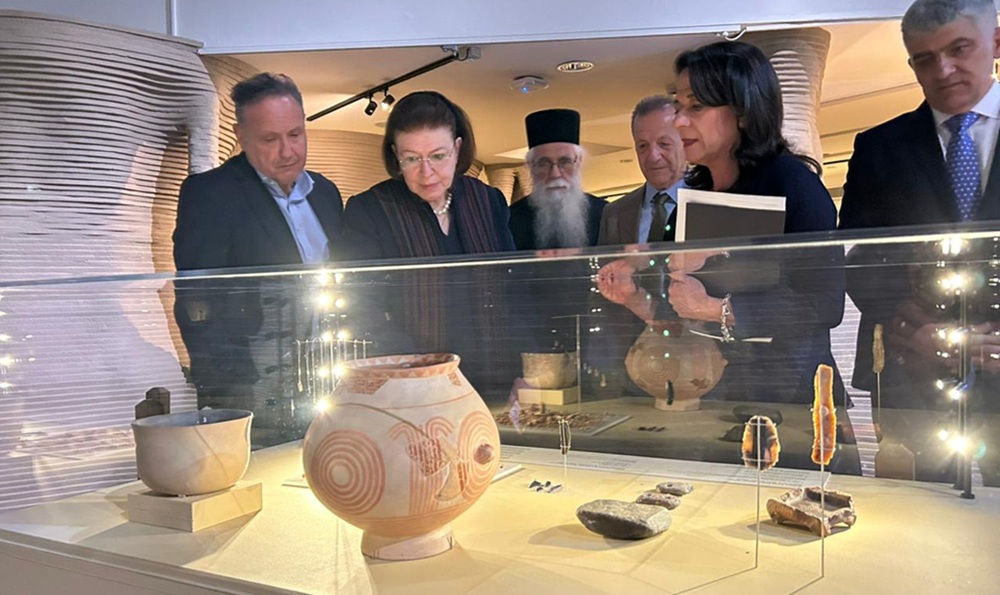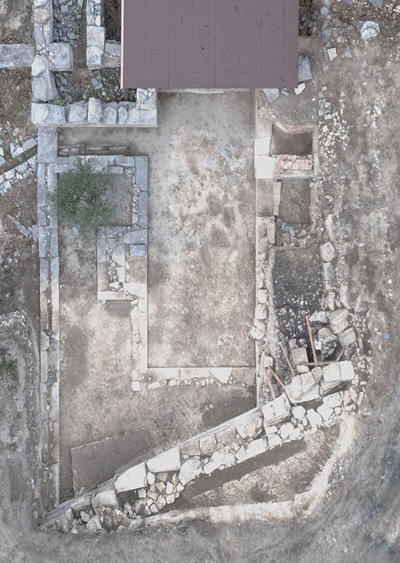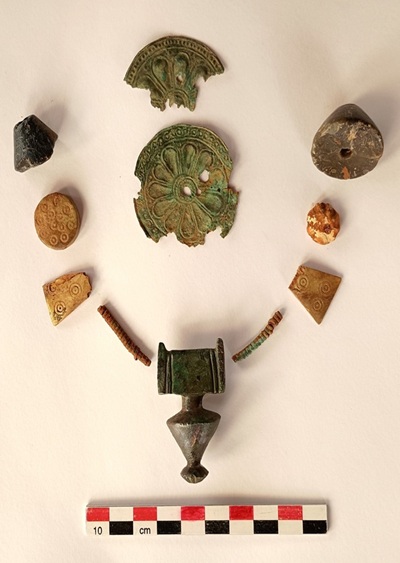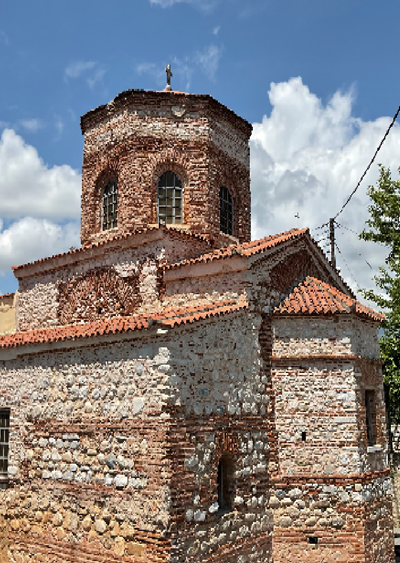
The Minister of Culture Lina Mendoni inaugurated, on Thursday 15 May 2025, the temporary exhibition, “In the Cave: Stories from Darkness to Light”, in cooperation with the Archaeological Museum of Thessaloniki and the Paleoanthropology-Caveology Ephorate. It is the first time that an archaeological exhibition is being organized, which highlights the cultural significance of caves – from the Paleolithic era to the present day – which were created in the distant past by natural processes, attracting man, as they offered him shelter and protection from his first steps. 296 objects from 30 caves and rock shelters of archaeological interest in northern Greece are exhibited and imaginatively presented in two rooms as a labyrinthine cave.
Lina Mendoni, in her welcome speech, noted that the exhibition “is an ambitious and original project that attempts, with a thorough interdisciplinary approach and a contemporary aesthetic, to illuminate – literally and metaphorically – the deep, multidimensional and timeless relationship of man with caves. A relationship that begins at the dawn of mankind and extends uninterruptedly and constantly evolving to the present day.”
As she pointed out, “the exhibition serves as an invitation and challenge to explore and discover. Through history, art and science, visitors are invited to discover the unique world of caves and appreciate their value as monuments of nature and culture. Caves offer themselves as witnesses to human history, but also as gateways that connect us to our ancient roots and to nature itself. The experience of this exhibition aspires to inspire public admiration, curiosity and awareness, strengthening our connection with the past and promoting the preservation of these unique monuments for future generations.”
The Minister stressed that “each exhibit is a piece of the puzzle, telling the story of caves and the interaction of man and nature. At the same time, it highlights the methodological and technical peculiarities, the fascinating nature and the various challenges of cave archaeological and anthropological research“.
The exhibition tells stories about creatures that lived in the caves, about animals that have disappeared, but also about the man of Petralona, who lived around 300. 000 years ago in the Petralona cave in Halkidiki, the Neanderthal children who ran around the fire in the cave of Theopetra 130,000 years ago, leaving their footprints in the mud, the hunters who lived in caves around Lake Ioannina, Pamvotis, and in the valley of Voidomatis, 15000 years ago, the community of fishermen who lived in Yura in the 8th and 7th millennia BC. X, Neolithic rituals in the Agriomernos cave of Samos, the farmers and breeders who lived in the rock shelter of the Katarracts of Sidirokastro, around 3000 BC. The people who took refuge with their anxieties and expectations in the caves of the Nymphs from Kissavos to the coast of the North Aegean, the monks who practiced in the caves of Prespa, but also the legends and traditions that accompany the caves in modern civilization. A rare 15th century icon of the Assumption of Saint Ephraim of Syros is presented. The illustration includes caves in which monks and hermits dwelt and prayed. This is the second time this particular icon has been moved from Mount Athos.
Most of the archaeological remains presented in the exhibition come from the collections of the Ephorate of Palaeoanthropology-Speleology, while its organization is the fruit of excellent cooperation with eleven Ephorates of Antiquities (Arta, Imathia, Ioannina, Kavala-Thasos, Larissa, Magnesia, Serres, Rhodope, Chalkidiki and Mount Athos, Florina and Chios) and three museums (National Archaeological Museum, Museum of Byzantine Culture and the Teloglion Foundation of Arts of the Aristotle University of Thessaloniki) that lent representative objects from their collections, many of them unpublished finds presented to the public for the first time.







Leave A Comment